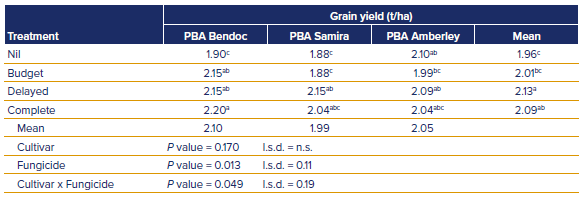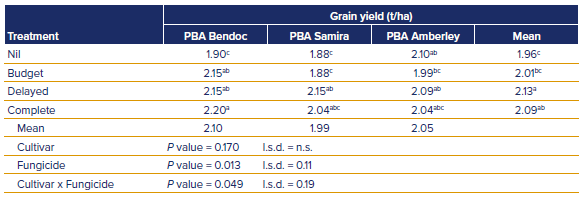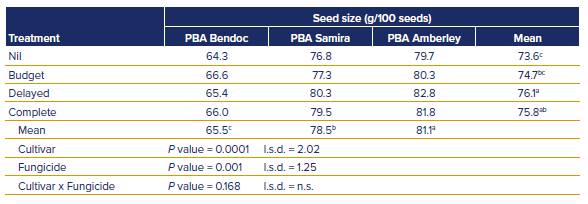Rainfall

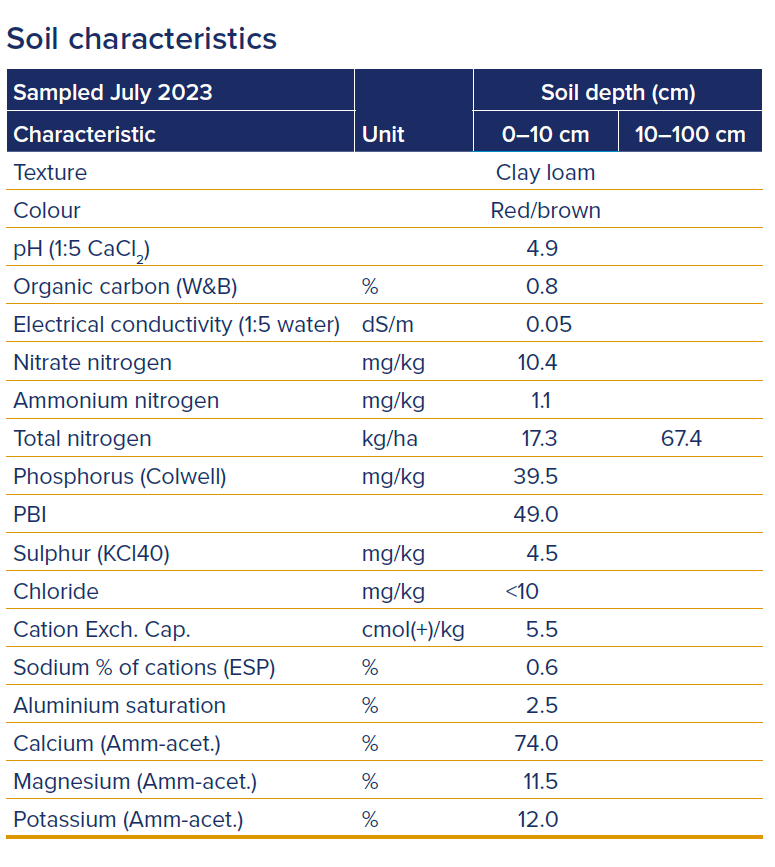
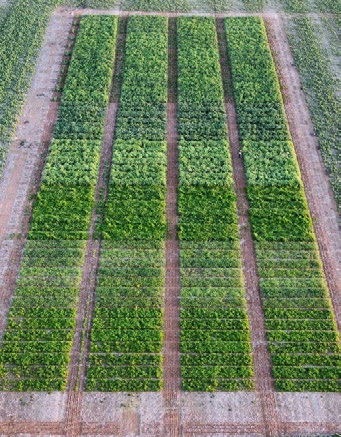

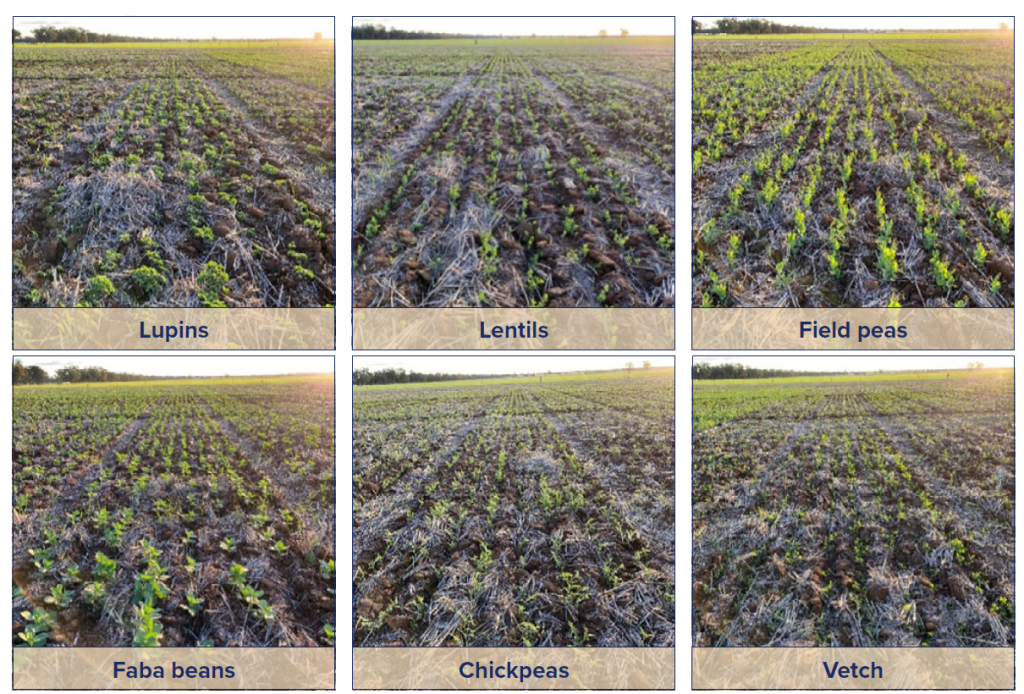
Key findings
•
Lupin grain yield averaged 2.15 t/ha with the albus lupin MurringoA having the highest yield (2.51 t/ha). Peak biomass averaged 7.19 t/ha with no difference between varieties tested or +N treatment. As expected the albus lupins MurringoA and LuxorA produced the largest seeds (mean 44.7 g/100 seeds). Seed N concentration of albus lupin (MurringoA) was 6.2% and narrow-leaf lupin (PBA BatemanA) was 5.2%. The N concentration of PBA BatemanA was unaffected by N application.
•
Field pea grain yield averaged 2.44 t/ha with no difference between the four varieties tested. Peak biomass was 5.95 t/ha in PBA ButlerA with no effect of +N treatment. PBA PearlA produced the largest seed (22.0 g/100 seeds). Seed N concentration of PBA ButlerA was 4.1% and was unaffected by N application.
•
Faba bean grain yield averaged 2 t/ha and peak biomass 5.47 t/ha with no difference between varieties tested or nitrogen (N) treatment (only applied to PBA SamiraA). PBA AmberleyA produced the largest seed (84.7 grams/100 seeds) of all varieties, FBA AylaA produced the smallest seed (59.5 g/100 seeds). Seed N concentration of faba beans averaged 4.3% and was unaffected by N application in PBA SamiraA.
- Lentil grain yield averaged 1.21 t/ha with no difference between the four varieties tested. Peak biomass (measured in PBA Hallmark XTA) averaged 6.03 t/ha with no difference between N treatments. PBA Kelpie produced the largest seed (5.2 g/100 seeds) of all varieties, while PBA Hallmark XTA produced the smallest (4.2 g/100 seeds). Application of N significantly increased PBA Hallmark seed size (4.4 g/100 seeds).
- Vetch grain yield averaged 1.16 t/ha with Morava the highest (1.49 t/ha). Peak biomass (measured in Timok and Benatas) averaged 6.04 t/ha with no difference between varieties or N treatments. Morava produced the largest seed (9.1 g/100 seeds) of all varieties, while Benetas produced the smallest (4.3 g/100 seeds). Seed N concentration of Timok (5.2%) was not affected by N application.
- Chickpea grain yield averaged 2.07 t/ha with CBA Captain the highest (2.22 t/ha). The application of N at 100 kg/ha increased the biomass of CBA Captain by 1.6 t/ha. As expected the kabuli type, Genesis™ 090, produced the largest seed (33.2 g/100 seeds). PBA HatTrick produced the smallest seed of the desi types (22.6 g/100 seeds). Seed N concentration of CBA Captain was 3.1% with nil N applied and 3.5% with 100 kg N/ha applied.
Trial details


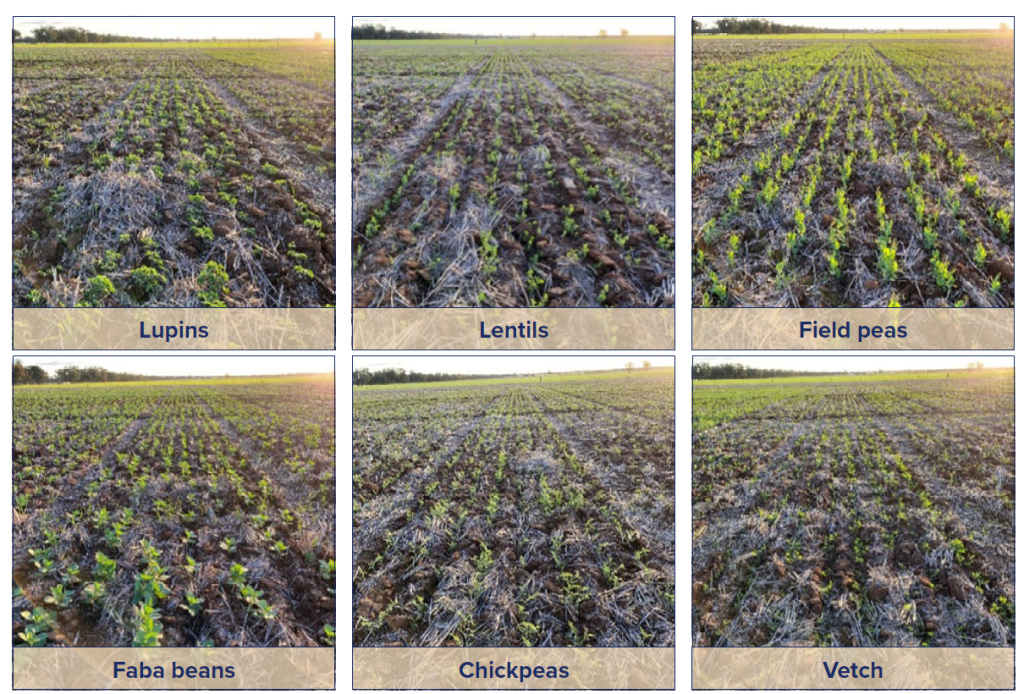
Results
Lupins
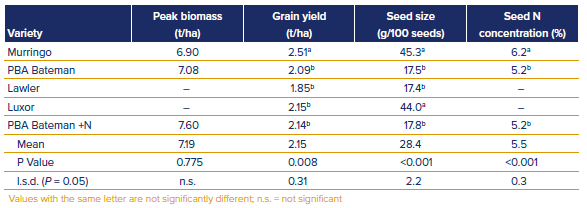
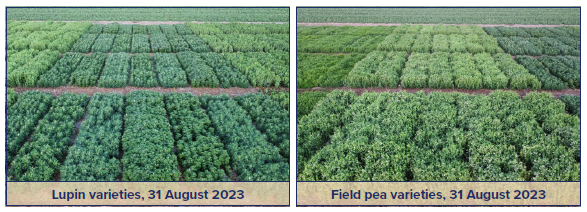
Faba beans
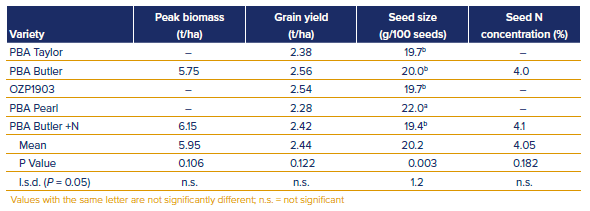
concentration at Daysdale in 2023.
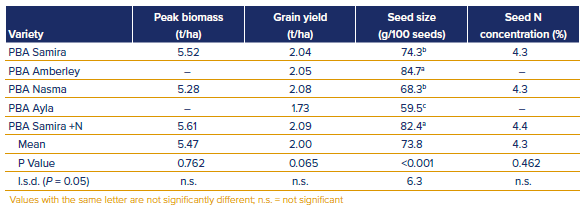
concentration at Daysdale in 2023.

Lentils
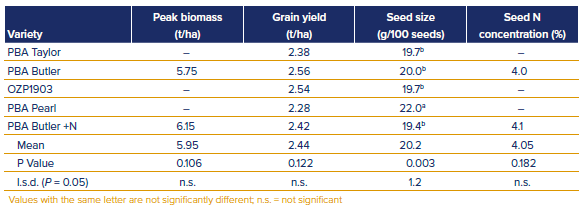
concentration at Daysdale in 2023.

Vetch
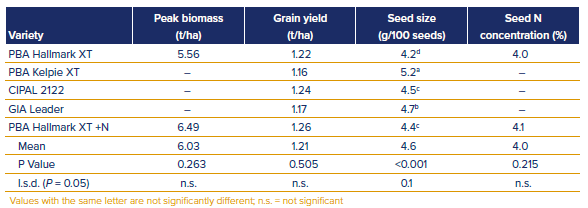
Chickpeas
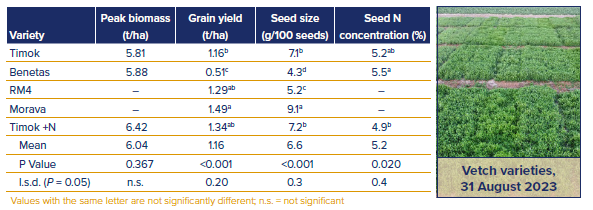
Faba bean disease management
Key findings
- Disease pressure was low in 2023 with <10% leaf area infection at the beginning of flowering. Both cercospora leaf spot and chocolate spot were present, but chocolate spot was the dominant disease later in the season.
- Chocolate spot: The susceptible (S) variety PBA Bendoc had the highest level of infection and the moderately resistant-moderately susceptible (MR-MS) variety PBA Amberley had the lowest level of infection of all varieties in the trial.
- Grain yield of the MR–MS chocolate spot resistant variety PBA Amberley did not respond to fungicide, while the more susceptible variety PBA Bendoc responded to the Complete treatment with 0.3 t/ha increase in grain yield, compared to Nil fungicide.
- The Delayed treatment (first fungicide applied at mid-flowering in late August) yielded the same as the Complete treatment, showing that there was no yield benefit from applying fungicides before the beginning of flowering in 2023.
- Peak biomass: Disease infection levels had no significant effect on biomass production, but PBA Samira had more biomass than PBA Bendoc and PBA Amberley.
Tral details

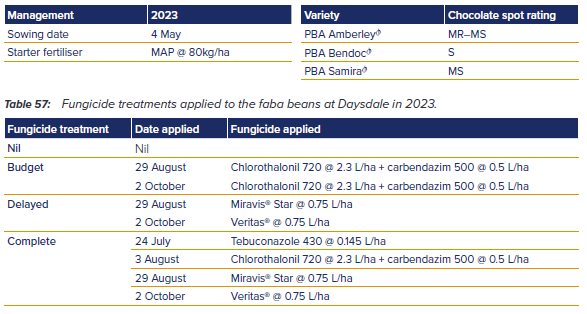
Results
Disease infection
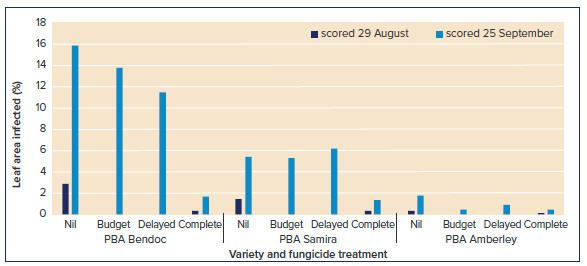
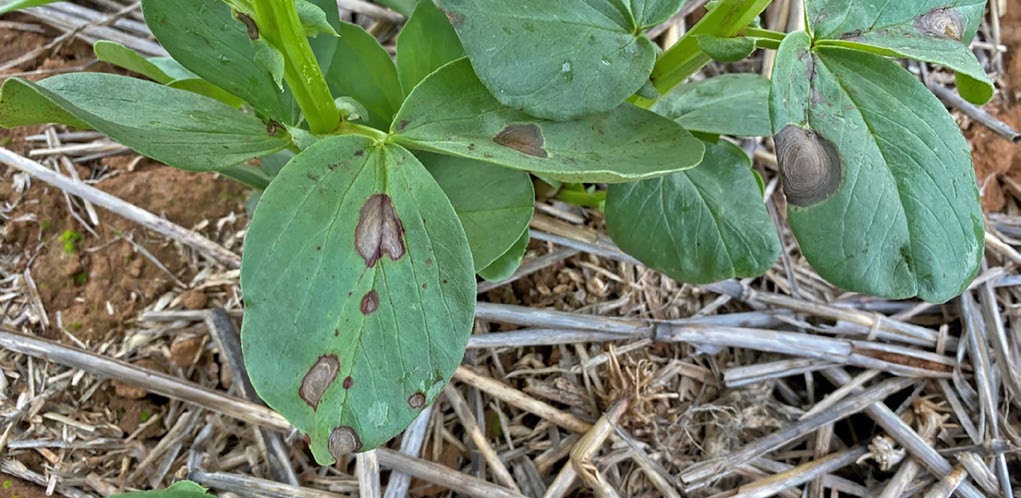
Biomass, yield and seed size
